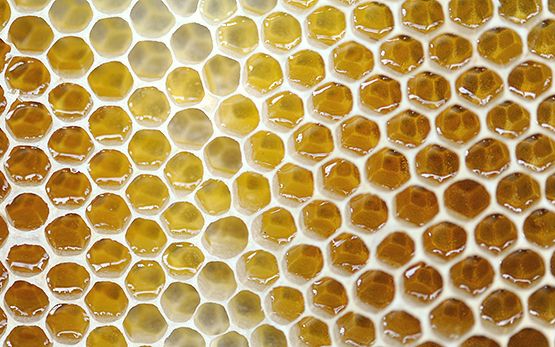Der Wassergehalt des von den Pflanzen produzierten Nektars kann variieren. Um seine Konservierung in den Waben zu gewährleisten, darf er nicht gären. Deshalb wird er von den Bienen in Honig umgewandelt, indem sie seinen Wassergehalt senken und folglich den Zuckergehalt erhöhen. Dies verhindert die Entwicklung der Mikroorganismen. In der Dunkelheit des Bienenstocks ist es schwierig, den Herstellungsprozess des Honigs zu beobachten. Aus diesem Grund ist er auch nur wenig erforscht. Um die Umwandlung von Nektar in Honig zu untersuchen, haben wir die Technik der Tomographie eingesetzt. Sie ermöglicht es, den Zuckergehalt des eingelagerten Nektars sehr präzise zu messen, ohne den Bienenstock öffnen zu müssen und das Bienenvolk zu stören.

Numero del progetto: 22.09.18.07.03
Potenziale trasmissione della resistenza antimicrobica nella catena alimentare
Half of all consumed fruit and vegetables in Switzerland are imported mainly from the Mediterranean region and, more and more, from other continents due to the higher demand of exotic fruits and to an increasing trend towards international gastronomy. Although it is well known that food may act as vehicle of dissemination of antimicrobial resistance, there is still lack of information about how the international trade of fresh produce contributes to this spreading. Moreover, there is a gap of knowledge about how the antibiotic-resistant bacteria present in food behave in the gastrointestinal tract once ingested by humans, and therefore, whether there is a risk of AMR transfer to the human microbiota. This project will help us to find answers to this important public health issue.
ID-Progetto: 3806 Inviare via e-mail
Responsabile del progetto
Sostituta/o
| Cognome, Nome | Sede |
|---|---|
| Hummerjohann Jörg | Liebefeld |
| Marti Serrano Elisabet | Liebefeld |
| Stergiou Maria Theresia | Wädenswil |
| Thönen Lisa | Liebefeld |
Thönen L., Hummerjohann J., Schwendimann L., Marti Serrano E.
Phenotypic and genotypic characterization of antibiotic-resistant bacteria from Swiss ready-to-eat meat products.
Frontiers in Microbiology, 16, 2025, Articolo 1649307.
Thönen L., Marti Serrano E., Hummerjohann J., Schwendimann L.
Antibiotic resistant bacteria from food.
NCBI BioProject, Dataset, 2025
Thönen L., Marti Serrano E., Schwendimann L., Wagner E., Weik D., Meier S.
Antibiotic resistant bacteria in ready-to-eat meat products from Switzerland.
Zenodo, Dataset, 2025
Stergiou M. T., Vollenweider V., Joyce A., Murphy S., Walser J.-C., Ju F., Bürgmann H., Hummerjohann J., Walsh F., Drissner D.
Unde venis? Bacterial resistance from environmental reservoirs to lettuce: Tracking microbiome and resistome over a growth period.
FEMS Microbiology Ecology, 100, (10), 2024, Articolo fiae118.
Kläui A., Bütikofer U., Naskova J., Wagner E., Marti Serrano E.
Fresh produce as a reservoir of antimicrobial resistance genes: A case study of Switzerland.
Science of the Total Environment, 907, 2024, 1-12.
Olivares-Pacheco J., Marti Serrano E., Rodriguez-Rubio L., Calero-Caceres W.
Editorial: Antimicrobial resistance in aquatic environments, Vol II.
Frontiers in Microbiology, 14, 2023, 1-3.
Calero-Cáceres W., Marti Serrano E., Olivares-Pacheco J., Rodriguez-Rubio L.
Editorial: Antimicrobial resistance in aquatic environments.
Frontiers in Microbiology, 13, 2022, 1-3.





